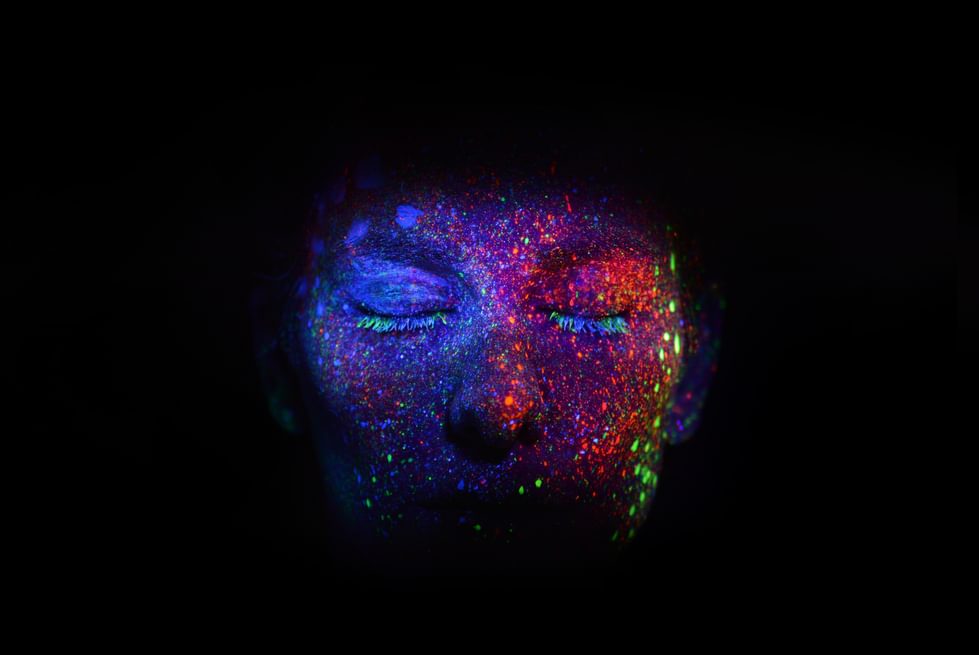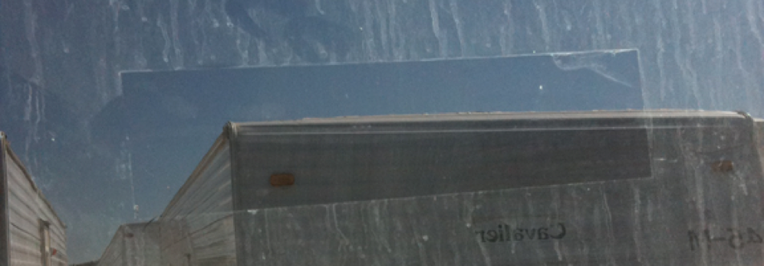Surreal
From the Series: Lexicon for an Anthropocene Yet Unseen
From the Series: Lexicon for an Anthropocene Yet Unseen

It is a word often at the tip of the tongue when a moment feels off the rails or inflected with difference. Flies buzzing at Christmas in Ontario. Desert dunes engulfing Chinese towns in slow motion (Zee 2017). “How surreal,” we murmur as fragments of new normals lunge into view. The patterning of life, death, and their surreal interstices, denoted by the Anthropocene, is not limited to planetary geophysical destabilization.
Rather, toxic textures of our ongoing present that unnervingly whiz by at the periphery of our senses, timespaces that feel both oversaturated and vacated of meaning, and feelings of unending transition are part and parcel of this pervasive alter-ordinary. How can an analytic of the surreal be made more than just a catch-all for residual out-of-place moments and help us to open up the altered states, illogics, and material breakdowns that emerge from ordinary and extraordinary encounters with changing environments?
The new administration in the United States serves as a reminder that surrealism is an appropriated genre of reality and not an artistically forged one. Its two original figures were the state and the market. Think of the widening expanses between official proclamations of triumph and the experiences of those freshly returned from the trenches of the First World War. Think, too, of the phantasmagorical rearrangements of the world’s things found in the Marché aux Puces flea market in Paris (Clifford 1981, 541). Still, the surreal does not only radiate from the out-of-touch claims of the state or the seemingly spontaneous juxtapositions of the market. Too, the very materiality of our short-circuiting, deteriorating, and chemically off-gassing world contributes to bowing reality into the surreal. One example among innumerable others is the chemical ecologies of low-income housing of the United States, which submerge inhabitants in an everyday in which meaning and matter are left ajar. Even within the home—that imagined bastion of autonomy, the ground-zero of the ordinary—governance, capitalism, and late industrial materiality fashion a state of things that is inflected with otherness.
* * *
When the A/C engaged, the lights in the front room came on. “Oh, it does that, we’re going to try to jerry-rig it,” an Indiana man remarked as an aside. He became exasperated when discussing his granddaughter’s health and would lose consciousness momentarily. His head would droop and his speech would pause, only to click back into gear a sentence or two downstream of where he left off.
* * *
A wire somewhere deep inside his trailer had frayed or broken loose in such a way that its entire aluminum exterior had become electrified. He couldn’t open the door of his rural Florida home without a considerable shock and a lingering sense that some part of his brain was slightly charred. He had been wracked with nightmares since he moved in. Something about being there warped his strength, irritated his nose and lungs, and led his son to have an in-womb stroke a month before his due date.
* * *
“I was concerned when the issue of the formaldehyde in the trailers come out, but you know what?” the matriarch of the house asked in a hushed tone. “My husband has some plan to rip the walls out . . .” The destruction of their home is the only way it could be imagined as habitable. In the meantime, the eleven family members that inhabit their single-wide trailer on a reservation in Washington state wade through simmering headaches. Capillaries in the noses of two granddaughters regularly leaked blood over their upper lips into their mouths. A large minority of the household sustained chronic diarrhea. One grandson was regularly sent home from preschool as he would split his time between the classroom and bathroom.
* * *
In these all-too-common corrosive spaces, chronic rifts in the ordinary fill with suspicions of an ongoing present, conditioning a temporality that is studded with unexpected dysfunction and nearly habitual enervation. Far from the surrealists’ hope that intoxication would provide a critical pathway to revolution, to loosening the bounds of the individual, and to ecstatically spurning the logics of modernity, the forms of intoxication at hand beckon an exhausting and unshakable present. The alter-ordinary is intensely entangled with what Michelle Murphy calls alterlife, a pervasive uneven distribution of toxicants that change the very substance of life and “are the enfleshment of settler colonialism, environmental racism, capitalism and war.”
In the glimpses above, as their ostensibly protective home begins to inflict harm and the very formaldehyde-based engineered woods that give structure to their house unravel their bodies, the physical and metaphysical situation of the inhabitants also begins to warp and distort. The surreal, here, is a tandem failure of matter and meaning. Think of Tess Lea’s (Lea and Pholeros 2010) analysis of dysfunctional and dangerous indigenous housing in Australia—buildings that look like houses but are not safe, secure, or salutogenic. Think of the warning labels (“NOT TO BE USED AS HOUSING”) the U.S. federal government applied to the chemically contaminated trailers they resold or donated to Native nations across the North America. Warnings that were systematically removed as gray markets purveyed these homes to the precariously employed, dispossessed, elderly, and poor. Think of the material ecologies of rural Missouri where, as Jason Pine (2016, 302) has so caringly documented, the intoxicating dream of industrial progress leaves the nation's most concentrated meth production industry in the wake of the largest primary lead smelter and the occult value of everyday commodities is excised to “get more life” while also hastening death.

The surreal is not just cultivated through artistic practice but is itself a means of governance, a medium and velocity of lethality, and an indicator of the frayed ends of industrial production. As an exercise of power over and disturbance of reality, as a present and a portent, the surreal is an inroad into the Anthropocene that simultaneously demands the most sober and systematic anthropology and the most hallucinatory, speculative, and reappropriative of our creed.
Clifford, James. 1981. “On Ethnographic Surrealism.” Comparative Studies in Society and History 23, no. 4: 539–64.
Lea, Tess, and Paul Pholeros. 2010. “This Is Not a Pipe: The Treacheries of Indigenous Housing.” Public Culture 22, no. 1: 187–209.
Pine, Jason. 2016. “Last Chance Incorporated.” Cultural Anthropology 31, no. 2: 297–318.
Zee, Jerry C. 2017. “Holding Patterns: Sand and Political Time at China’s Desert Shores.” Cultural Anthropology 32, no. 2: 215–41.